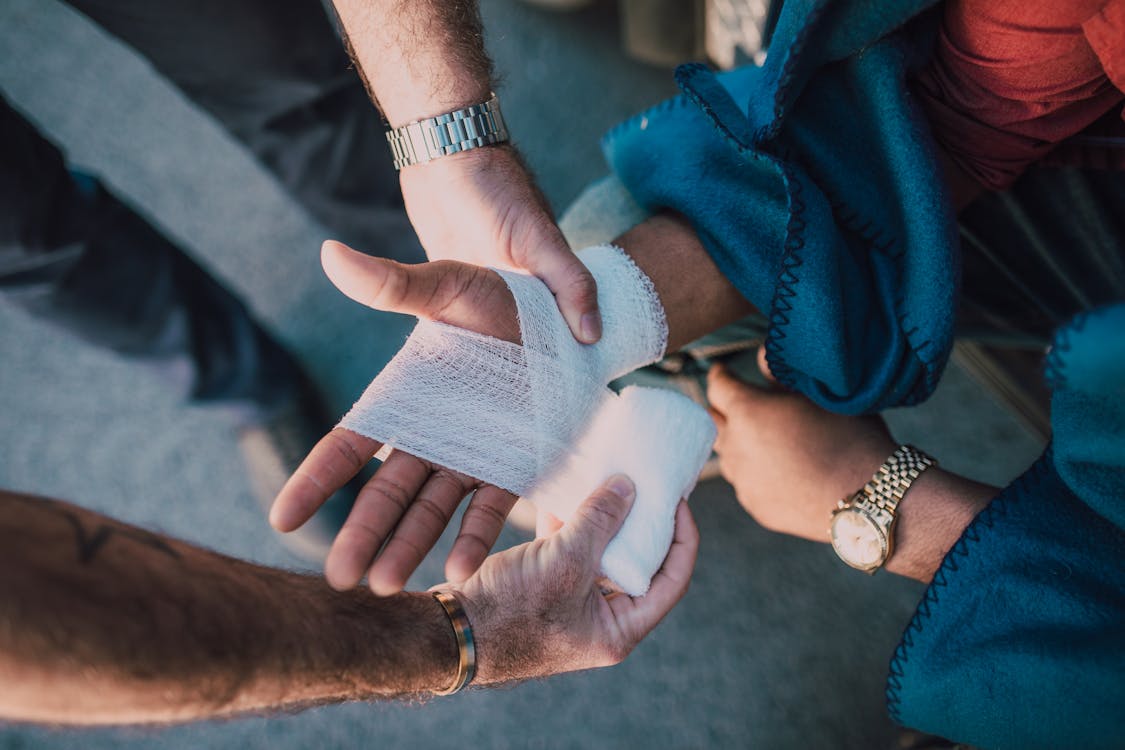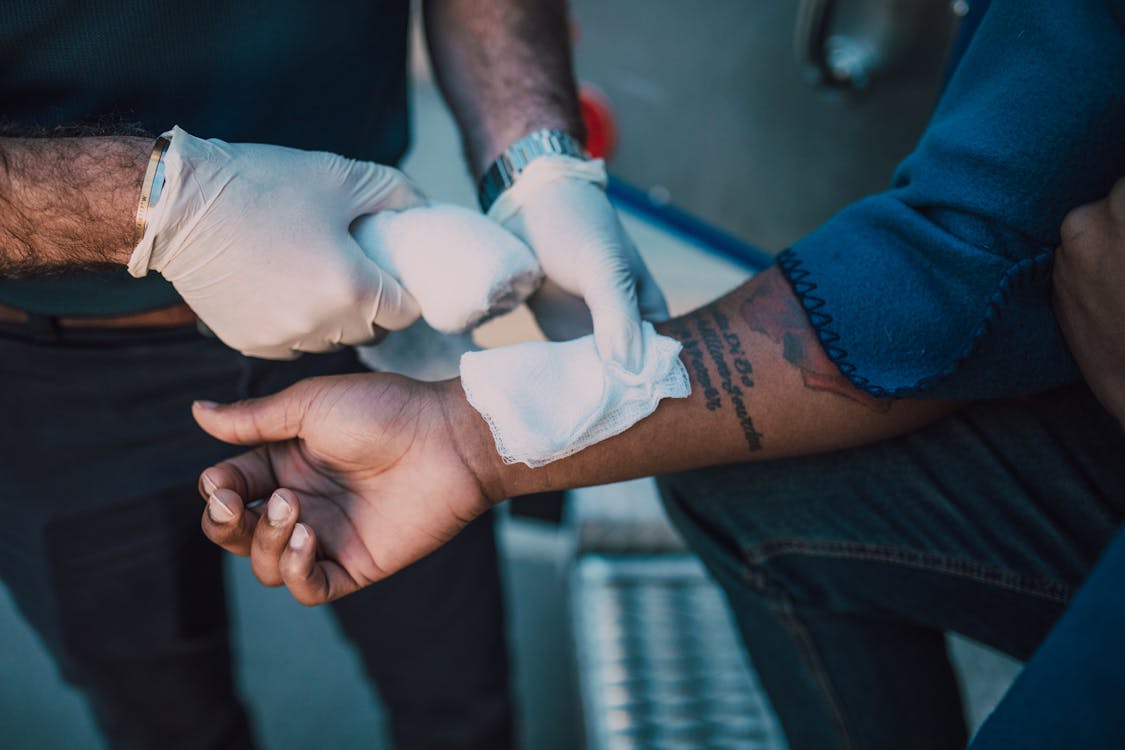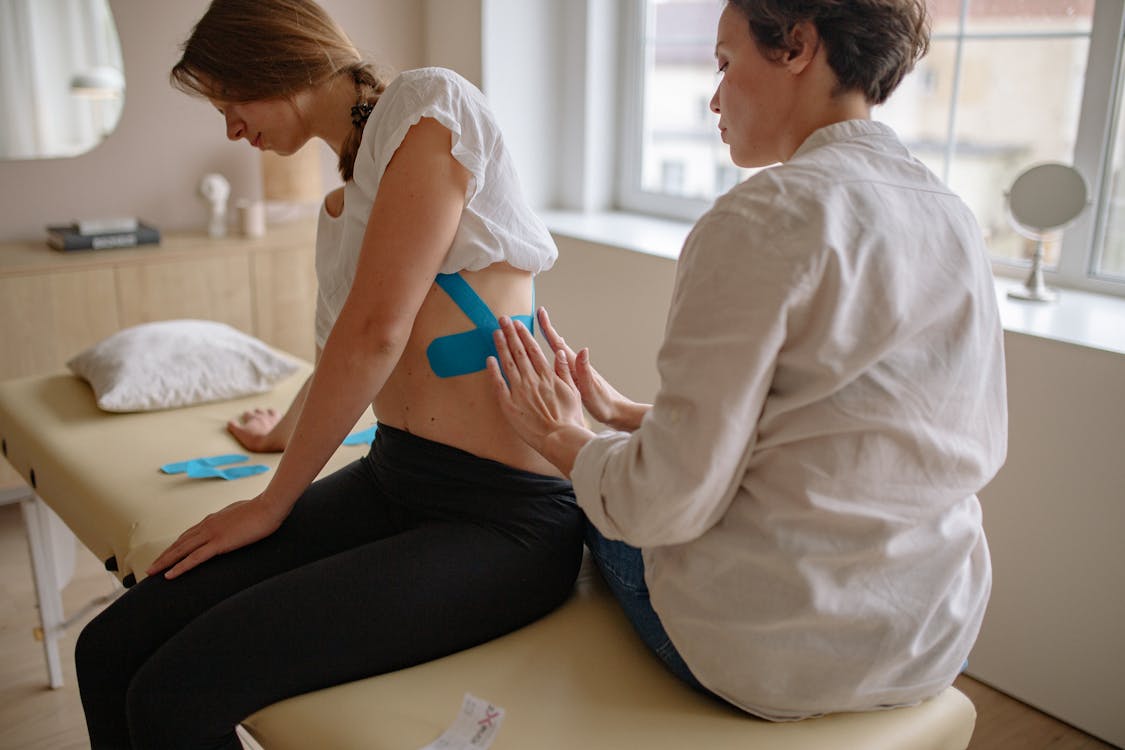When it comes to first aid kits, bandages are often overlooked. However, they are the unsung heroes of first aid kits and can make a big difference in an emergency.
From small cuts to more serious injuries, bandages are a crucial tool for preventing infection and promoting healing.
Photo By Andrea Piacquadio on Pexels
In this article, we'll explore why you need bandages in your first aid kit and the different types of bandages you should have on hand. So, let's dive in and discover the importance of bandages in first aid.
The Types of Bandages
Knowing about the four major types of bandages is crucial for anyone who wants to be prepared for medical emergencies. This article provides an overview of each type and examples of when to use them.
Don't wait until a crisis hits to learn about these essential first aid supplies - include a couple of them in your kit and be ready to help yourself and others in need.
Below are the different types of bandages you should know about!
A. Traditional Bandages
Traditional bandages are necessary for wound care because they provide vital protection and support for injuries.
They are often made of textiles with ventilation that maintains the required compression while allowing for appropriate airflow.
By RODNAE Productions on Pexels
Examples:
Crepe bandagesGauze pads
Triangular bandages
Gauze bandages
Roller bandages
Tubular bandages
Conforming bandages
Cravat bandages
Elastic bandages
Cotton bandages
These bandages have several uses, including stopping bleeding, exerting pressure, immobilizing fractures, and securing dressings.
Traditional bandages are an absolute must in every well-stocked first aid kit, whether you're dealing with a little cut or a more serious accident.
B. Adhesive Bandages
Adhesive bandages, popularly known as Band-Aids, are a must-have item in every first-aid box.
They are intended to adhere to the skin without the need for extra adhesive tape or pins and generally consist of a tiny, absorbent pad linked to a strip of sticky material.
Adhesive bandages are ideal for small cuts, scrapes, and blisters because they act as a protective barrier, keeping the site clean and preventing infection.
They come in a variety of sizes and forms, and they may even be waterproof, allowing the user to wash or swim without fear of the bandage tearing off.
While sticky bandages are good for small injuries, more serious wounds or injuries need skilled medical treatment.
Some examples include:
- Hydro seal bandages
- Liquid bandages
- New skin liquid bandages
- Blister bandages
- Waterproof bandages
- Non-stick bandages
- Butterfly bandages
Overall, these handy and simple bandages provide an immediate covering for tiny wounds while protecting them from dirt, pathogens, and harm.
Whether at home, the workplace, or on the road, having adhesive bandages in your first aid kit is essential for being prepared for any situation.
C. Compression Bandages
Compression bandages are an important medical tool used to control bleeding and reduce swelling. These bandages are typically made of elastic materials, which allow them to conform to the shape of the body part they are applied to and provide a comfortable fit.
Compression bandages can be found in many first aid kits and are especially useful for treating sprains, strains, and deep vein thrombosis.
By RODNAE Productions on Pexels
Examples:
- Ace bandages
- Compression wraps for legs
- Pressure bandages
- Elastic adhesive bandages
- Tensor bandages
While compression bandages are effective, it's imperative to use them correctly and under the guidance of a healthcare professional.
Incorrect application or overuse can result in adverse effects such as nerve damage or decreased blood flow. Used responsibly, compression bandages can help to promote healing and lead to better recovery outcomes.
If you are in need of compression bandages or have questions about their usage, speak to a medical professional to get the right guidance for your specific situation.
D. Specialized Bandages
Specialized bandages can provide additional benefits, such as antibacterial properties to prevent infections or waterproofing to keep the wound dry.
Certain types of bandages can even deliver medicine directly to the wound site, allowing for targeted treatment and faster healing.
Examples:
Hydrocolloid bandages
Unna boots
Israeli bandages
Viscopaste
Coban dressing
Velpeau bandages
Gypsona
Cast cover for shower
Shoulder, wrist, hand, finger, knee, ankle, foot, and toe bandages
Head, eye, and nose bandages
Cast cover for shower
Seeking professional medical advice is crucial when it comes to choosing the right type of specialized bandage for your unique injury or medical condition. With the right bandage, you can speed up the recovery process, minimize pain, and optimize healing.
Don't settle for a one-size-fits-all approach when it comes to treating wounds - speak to a medical practitioner to find the specialized bandage that best suits your needs
Remember
Bandages are a crucial component of any well-stocked first aid kit, playing a vital role in preventing infection and promoting healing.
From traditional options to adhesive, compression, and specialized varieties, each type of bandage has unique features and benefits.
To ensure you're best prepared for any medical emergency, it's important to have a variety of bandages on hand and understand their uses.
Seeking professional medical advice can be especially helpful when it comes to choosing the right type of bandage for your specific injury or condition.







